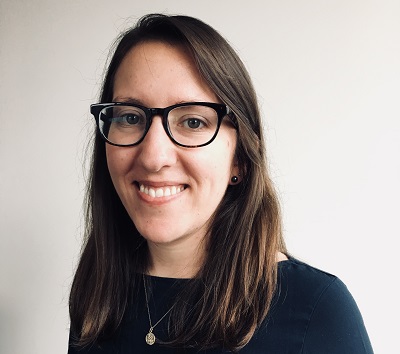Winter holidays offer a moment to reflect on what’s most important to us. Particularly as we live through a harrowing year, I’ve been prompted to remember and appreciate what I hold closest—from health and a supportive community to good coffee and a cat curled in my lap.
In a similar vein, I’ve noticed that this year has prompted school communities to double down on what they hold closest as well. In particular, schools dedicated to a student-centered learning approach often hold a handful of commitments close. What can we learn from those schools about the practices they see as central to their work?
Signals in the noise
The Canopy is a database showing what’s underway in student-centered schools across the country. To build that database, we ask participating school leaders to identify their schools’ practices using a “tagging system”—a set of keywords describing innovative designs. These “tags” range from broad approaches, like social-emotional learning, to more narrow design decisions like student-led conferences or makerspace.
Because the project includes 91 tags this year, anyone browsing Canopy school profiles can dig into a fair amount of detail about each school’s design. For example, beyond learning that Highland Academy Charter School in Anchorage is a competency-based school, database visitors can see that the school’s competency-based model features individualized learning pathways and multi-age classrooms, and allows students to advance upon reaching mastery.
But with most schools reporting dozens of tags, it can be hard to get a sense of their center of gravity. On this year’s Canopy school survey, once school leaders tagged all the practices being implemented at a schoolwide level, they could identify up to five that they see as “core” to their school models. The survey then asked them to report how long each practice has been implemented.
This data on “core” tags allows us to analyze trends and patterns across the dataset when it comes to what practices schools see as central to their models. Here’s what we learned from that analysis:
1. Most schools reporting project-based learning see it as central
The Canopy tag that school leaders cited most often as being core to their school models was project-based learning (PBL). PBL is also uniquely notable for another reason: among the 109 schools that reported implementing it, 60% cited the practice as one of five core practices. In comparison, a tag like blended learning—although reported by schools at a comparable rate to PBL overall—was much less often chosen as a core practice. One explanation could be that leaders see PBL as an instructional model that’s also indicative of a pedagogical philosophy, whereas an instructional approach like blended learning is less closely tied to a specific set of core beliefs about teaching and learning.
Social-emotional learning (SEL), which was by far the most-cited practice across the dataset, was the second-most-cited core practice after PBL. It’s also worth noting that some schools chose SEL integrated across academics, a more specific tag related to SEL, as a core practice. All in all, among the schools reporting either SEL tag, just over half named at least one of the tags as a core practice.
2. PBL, SEL, and competency-based models appear, on average, most mature
In the Canopy school surveys, after schools chose their core practices, we asked them to report how long they’ve been implementing each of those core practices. This data offers insight into the average maturity of the practices that Canopy schools see as central to their work.
With this in mind, we learned from the Canopy data that PBL as a core practice is not only common—it’s also fairly mature. Over 60% of schools with PBL as a core practice report implementing it for five years or more. In a similar vein, about half of schools citing social-emotional learning and competency-based education report implementing these practices for five years or more. These patterns suggest that these three practices are not only commonly seen as central to innovative school designs, but are also likely to be more mature in their implementation.
In contrast, other commonly-cited core practices, like blended learning, designing for equity, and culture of restorative practice, have a more mixed tenure. Compared to the average maturity of a core practice like PBL, these appear to be newer core practices—whether that’s because schools have only begun implementing them recently, or because the schools citing those practices are themselves newer. (Here, it’s important to note that we did not ask schools to report how long they’ve implemented their non-core practices. As a result, our conclusion here is simply that some core practices appear more mature than other core practices, not that some practices are more mature than other practices in general.)
3. Many schools tagged specific practices as core to their models
It’s fairly unsurprising that some of the most commonly-cited core practices are broad, like PBL and SEL, which encompass a wide variety of strategies and approaches to implementation. Indeed, the top five core practices in the Canopy data are tags that we call “general approaches” in the tagging system—they are more representative of domains of innovation than specific design decisions.
But not all schools opted to use these more broad tags to describe the core practices in their school models. Bennington Junior-Senior High School in Vermont indicated 1:1 mentoring as a core practice. The Blue Valley Center for Advanced Professional Studies in Kansas opted to give students meet industry professionals a spot in its five core practices. Avonworth High School in Pennsylvania cited flex model, a model of blended learning, as a core practice. And Olympic Hills Elementary in Washington reported social justice focus as a core practice.
In the education sector, aspirational statements about innovative school designs can feel vague and slippery. As a result, it’s refreshing to see when schools put a stake in the ground about a specific practice that’s a cornerstone of their work. It also challenges those of us trying to make sense of an increasingly diverse set of approaches to innovation: rather than defaulting to broad and generic descriptions of school models, we should continue working to sharpen the categories we use to distinguish one approach from another.
Despite the relentlessness of the COVID-19 pandemic, innovative schools in the Canopy project remind us that the most salient design choices in schools are not, in fact, “remote” or “hybrid.” These schools’ commitment to their core practices through a difficult year can give us hope as we look towards the future of student-centered learning in 2021 and beyond.


